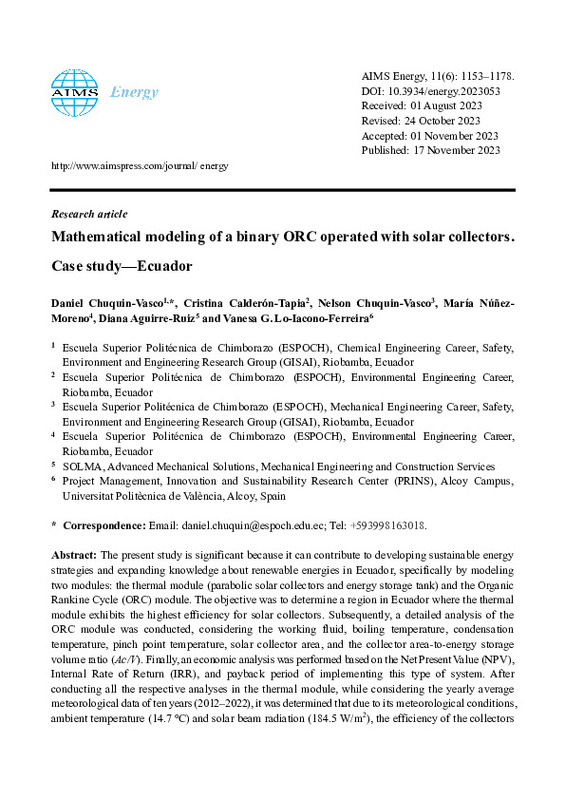JavaScript is disabled for your browser. Some features of this site may not work without it.
Buscar en RiuNet
Listar
Mi cuenta
Estadísticas
Ayuda RiuNet
Admin. UPV
Mathematical modeling of a binary ORC operated with solar collectors. Case study-Ecuador
Mostrar el registro completo del ítem
Chuquin-Vasco, D.; Calderón-Tapia, C.; Nelson Chuquin-Vasco; Núñez-Moreno, M.; Aguirre-Ruiz, D.; Lo-Iacono-Ferreira, VG. (2023). Mathematical modeling of a binary ORC operated with solar collectors. Case study-Ecuador. AIMS Energy. 11(6):1153-1178. https://doi.org/10.3934/energy.2023053
Por favor, use este identificador para citar o enlazar este ítem: http://hdl.handle.net/10251/202336
Ficheros en el ítem
Metadatos del ítem
| Título: | Mathematical modeling of a binary ORC operated with solar collectors. Case study-Ecuador | |
| Autor: | Chuquin-Vasco, D Calderón-Tapia, C Nelson Chuquin-Vasco Núñez-Moreno, M Aguirre-Ruiz, D | |
| Entidad UPV: |
|
|
| Fecha difusión: |
|
|
| Resumen: |
[EN] The present study is significant because it can contribute to developing sustainable energy strategies and expanding knowledge about renewable energies in Ecuador, specifically by modeling two modules: the thermal ...[+]
|
|
| Palabras clave: |
|
|
| Derechos de uso: | Reconocimiento (by) | |
| Fuente: |
|
|
| DOI: |
|
|
| Editorial: |
|
|
| Versión del editor: | https://doi.org/10.3934/energy.2023053 | |
| Agradecimientos: |
|
|
| Tipo: |
|









